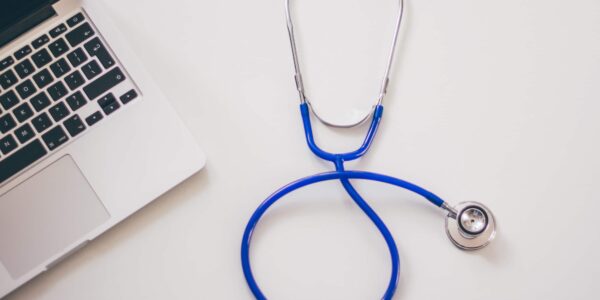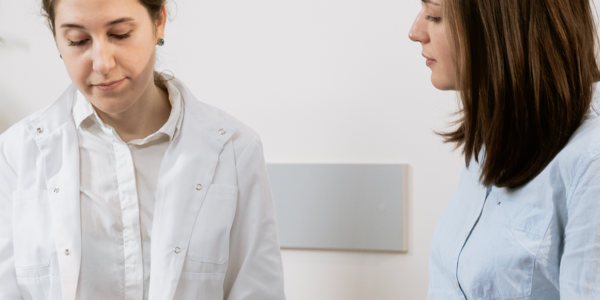Many times when people connect with us at OhMD, they are looking to add new tools to communicate with patients. The underlying issue that is uncovered 95% percent of the time is that they aren’t just looking for a communication tools. They are looking to solve for the impact of poor communication on patient care. These are two different things. Tools are great, but only if they can be used together to solve a problem. And poor communication in patient care? That is a problem.
Here’s something you may not know: communication failure accounts for over 30 percent of medical malpractice lawsuits. Many of these lawsuits resulted in major fines for the medical institution.
Ineffective workplace communication a healthcare organization often leads to unsatisfactory outcomes, and one of the major causes of communication breakdown is provider burnout. Healthcare professionals often report feeling overworked and pressed for time. Identifying the impact when communication is lacking in healthcare can give us insights into how to minimize this issue.
What are the impacts of ineffective communication in healthcare?
The results of ineffective workplace communication in healthcare are vast and innumerable. We’ve attempted to compile some of the larger issues that arise. Before diving into some concrete effects of communication breakdown, let’s consider a scenario that may seem familiar to many people:
Paul is a patient visiting his PCP due to concerns with his ongoing blood pressure ranges. He arrives at the office 10 minutes early, just in case there is any new paperwork he needs to complete before his appointment. At 11 o’clock, Paul’s designated appointment time rolls around while he continues to sit in the waiting room. He starts to worry that he may be returning to work later than he anticipated.
Eventually Paul is called back into a patient room and explains his concerns to a nurse. When the doctor comes to his exam room, he has to repeat everything he just told the nurse. After explaining his history with blood pressure medications, the doctor prescribes him a new medication and sends him on his way.
Paul picks up the new medication and takes it as instructed. Over the course of a few days he doesn’t notice any improvement. He decides to return to the office to speak with his doctor again. At this appointment he learns that he was supposed to be taking a higher dosage than was sent over to the pharmacy. He leaves the office feeling frustrated and unsatisfied with the level of care he received.
This situation has happened time and time again, at countless practices. It’s unsatisfactory for both the patient and the provider. Now that we have a case to examine, let’s explore the concrete effects of communication breakdown and how to avoid those experiences.
How does good communication improve healthcare?
Good lines of communication make everything better. In healthcare when providers are able to communicate with each other and with patients, the likelihood of a positive patient outcome is far greater. In fact, research indicates that good communication skills are closely linked to a patient’s likelihood of following through with medical recommendations.
Transform dissatisfaction into satisfaction
Ideally, healthcare workers are always looking to ensure patient satisfaction and positive outcomes. Unfortunately, other tasks (like charting and managing call volume) have a tendency to overtake the ideal care process. Excellent patient care requires a great deal of communication. When one overwhelmed provider doesn’t have time to communicate with another, high quality patient-centered care becomes impossible.
In the above scenario, Paul is not able to discuss his current concerns in-depth. Instead, he is spending the majority of his appointment time updating his provider with his past medical history. This leads to a less emphasis being placed on what Paul wants to discuss.
On top of the fact that Paul is not able to divulge his concerns thoroughly, he feels that his time has been wasted. He spent most of his appointment time sitting alone, not receiving medical attention.
When providers are able to communicate easily, patients are far better off. Whether we consciously notice it or not, genuine, consistent communication creates a sense of trust and mutual respect. In turn, the care suggestions offered by providers are more likely to properly address patients’ needs and concerns.
With patient and clinician communication tools like OhMD, you have a variety of ways to keep in touch with your patients. Most patients prefer texting over just about any other form of communication. So why not give them the chance to connect with you using HIPAA-compliant two-way SMS communication?
Best practices for patient-centered care suggest that giving your patients the opportunity to reach you using their preferred method of communication is a necessity. This is why OhMD also offers Patient Calling and Website Chat. Using these tools, patients are able to connect with you as they prefer. The best part of these solutions lies in the fact that they are part of a unified platform. For providers, texts, web chats, and transcripts to patient calls all live in a unified patient chat so management of multiple tools is no longer necessary.
Improve patient outcomes
A lack of communication amongst care providers has been linked to unsatisfactory consequences. We know that, in Paul’s case, the main breakdown in communication occurred when he was prescribed the incorrect dosage of his new medication. Several smaller breakdowns also occurred during his visit. He experienced long wait times and had to repeat his medical history to several different staff members.
When ineffective workplace communication causes a communication breakdown between providers, it is far more likely that patients will receive inadequate treatment. Whether this means prescribing the wrong dosage of medication, running incorrect or duplicate tests, or relaying the wrong advice, patients are suffering.
In Paul’s case, effective communication amongst providers could have saved everyone time and energy, and vastly improved the patient experience. Even more, it is likely that Paul would have received the correct dosage of medication from the get-go. He would have experienced the benefits of his new medication more quickly and his providers would not have had to explain the mix-up.
Decrease stress for clinicians and prevent burnout
We are all aware of just how understaffed and overworked healthcare professionals are. With that in mind, doesn’t it make sense to minimize unnecessary work?
Effective communication is not just beneficial for patients. Studies have shown that protocols for open lines of communication reduce burnout. This is because established requirements for communication encourages collaboration, saves staff time, and reduces the accidental repetition of tasks. This positively influences working relationships and job satisfaction.
There are many administrative tasks which take up tremendous amounts of time for medical offices. If your organization relies solely on manual outreach, it is easy to see how time spent actually caring for patients is vastly reduced.
Take sending appointment reminders as an example. Many organizations still pick up the phone to alert patients of upcoming appointments, and when you consider that on 20% of people will pick up a call from an unknown number, you quickly realize this is an effort in futility.
What if you could automate, personalize, and send messages to multiple people all at the same time? With the right tech stack it is possible. Using OhMD’s Broadcast tool, you are able to send individualized messages to patients on a large scale with a couple clicks.
Another extremely time-consuming task is handling common patient requests. These could include prescription refill inquiries, appointment scheduling and check-ins, and review requests. Depending on your staffing, even managing a small patient base can be daunting when it comes to administrative and patient access tasks. Tools like OhMD Autopilot allows you to manage these common workflows through an automated two way texting. You receive all the information you need, without having to manually send a message.
Reduce traditionally high healthcare costs
Lastly, but still very important, is the financial side of healthcare. Ineffective workplace communication amongst providers often causes extra work, and therefore extra bills. For instance, patients may need to have multiple visits in order to handle a simple health concern. Or worse, they may be billed improperly for their visits.
Medical bills are already unpleasant. Incorrect medical bills are even worse. Incorrect bills sent to patients are both irritating and undermining your practice. But, if communication has been open and all members of the care team are aware of the situation, improper billing and redundant visits are much more easily avoided.
Increased communication can help to reduce the amount of times patients need to schedule and come in for a billed visit.
Faster and more efficient communication also reduces the amount of time spent on repetitive tasks. You are therefore able to get more done in less time. This lessens the opportunity cost for your practice.
So, how does poor communication affect patient care?
In essence, it makes everyone’s lives more difficult. Patients are unhappy, which makes providers stressed and dispirited.
Without the proper tools, avoiding ineffective workplace communication can be pretty difficult. But with support from software like that offered by OhMD, both patients and providers are able to take a breath of fresh air.
Take the success of your practice and the satisfaction of your patients into your own hands by implementing better and easier communication tools.




